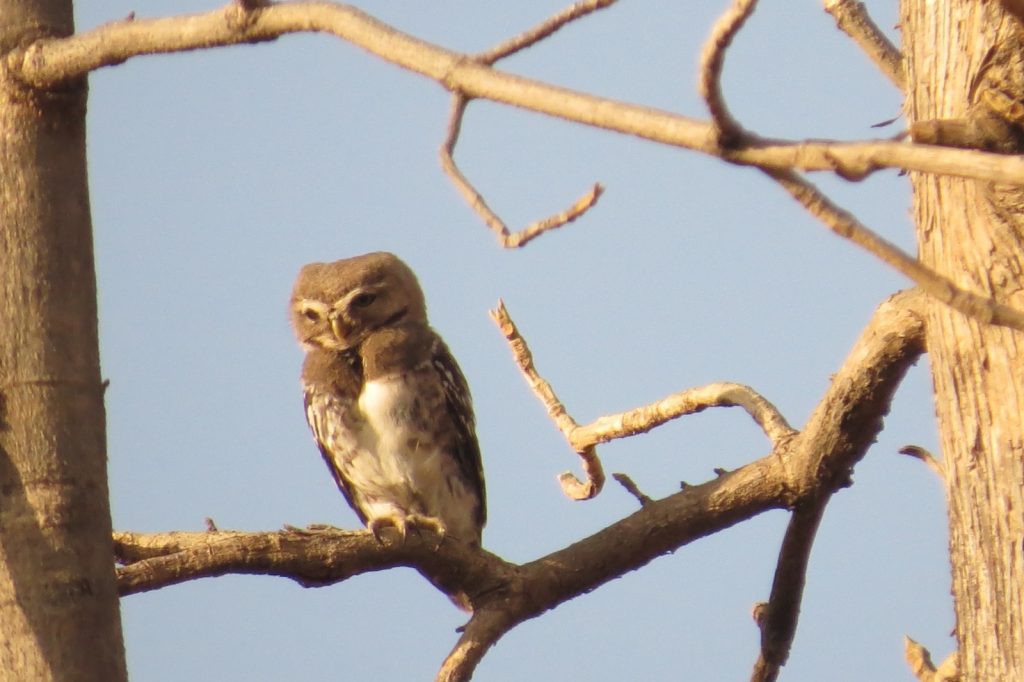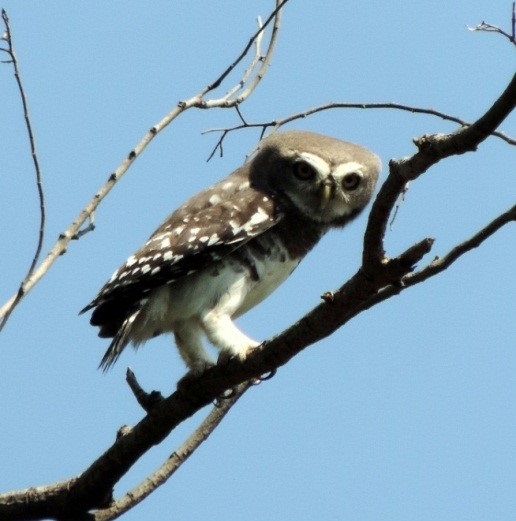
Through numerous trips, Prachi Mehta has been able to intensely study the forest owlet and its distribution in the Melghat Tiger Reserve of Maharashtra as well as in other parts of India. A report by Deepanwita Gita Niyogi
Wildlife scientist Prachi Mehta has been studying and researching on owls in India for almost two decades. According to Mehta, who is associated with the Wildlife Research and Conservation Society, a Pune-based non-profit, owls are usually less studied as most of them are nocturnal and elusive.
“Owls are difficult to spot in the daytime and at night it is a problem to track them. This is the reason why they remained neglected for long. But as they have been well studied in some countries, I decided to study owls, especially found in the forest areas of India.”
Mehta, who finds owls fascinating, describes them as specialised and evolved birds. As she felt owls did not receive the due attention, she started work as early as in 2005 and even took a trip to the United States to know more about methods and research techniques to study them. The main learnings during a month-long trip focused on colour banding and radio tagging.
Early studies
Initial studies were conducted across five Indian states in eastern and central India, including Odisha, Chhattisgarh and Madhya Pradesh. Though Mehta studied all kinds of owls for her research, her special focus, however, lay in the forest owlet (Athene blewitti), small in size (about 19 cm), which has been categorised as critically endangered. It is endemic to India.
There were some studies on the spotted owlet (Athene brama), another tiny bird which is found in urban areas, but the forest owlet remained neglected for long.
“I was curious. The rediscovery of the forest owlet came to light after 113 years after being declared possibly extinct and it piqued my interest. I needed to know why they are found in certain areas and how all owls live and share resources together.”
The forest owlet was first spotted in 1872 and rediscovered in 1997 by Pamela Rasmussen. Mehta describes the call of the forest owlet as musical.
While studying the distribution of the forest owlet, two new areas came to light in Madhya Pradesh. But as these sites were not inside a protected area, threats remained, especially from indiscriminate timber logging.
Work in Melghat
Through numerous trips, Mehta has been able to intensely study the forest owlet and its distribution in the Melghat Tiger Reserve of Maharashtra. Today, Melghat has the largest population of the forest owlet. But Mehta refrains from putting an exact number at this moment. Melghat is densely forested and is located in Amaravati district of Maharashtra. It was among the first nine tiger reserves notified in 1973 under Project Tiger.
“There is a good density in Melghat as being a protected area, threats aren’t much present there. But forest fires can damage trees and the use of pesticides impact the prey base of owls.”

In order to survive, the forest owlet needs cavity-bearing trees made by woodpeckers. It feeds mainly on rodents. Their survival also depends on a good breeding population and safe nesting.
Apart from forest fires, the biggest threat is poaching. Owls are hunted for trade though under CITES, it is banned. Owl eggs are also stolen. All owl species in India are protected under the Wildlife (Protection) Act, 1972.
For protection, tracking the birds is important and this is where colour banding of owls helps. “Also called marked recapture, it is a technique where birds are caught. After that a colour band is tied to their feet.”
In Madhya Pradesh, a community-based conservation programme supported by the state biodiversity board has been started to conserve the forest owlet and other owl species in Burhanpur and Khandwa districts where mainly timber is harvested.
For her work, Mehta has won recognition. Last year, she won the World Owl Hall of Fame Special Achievement Award and travelled to the United States for it.













